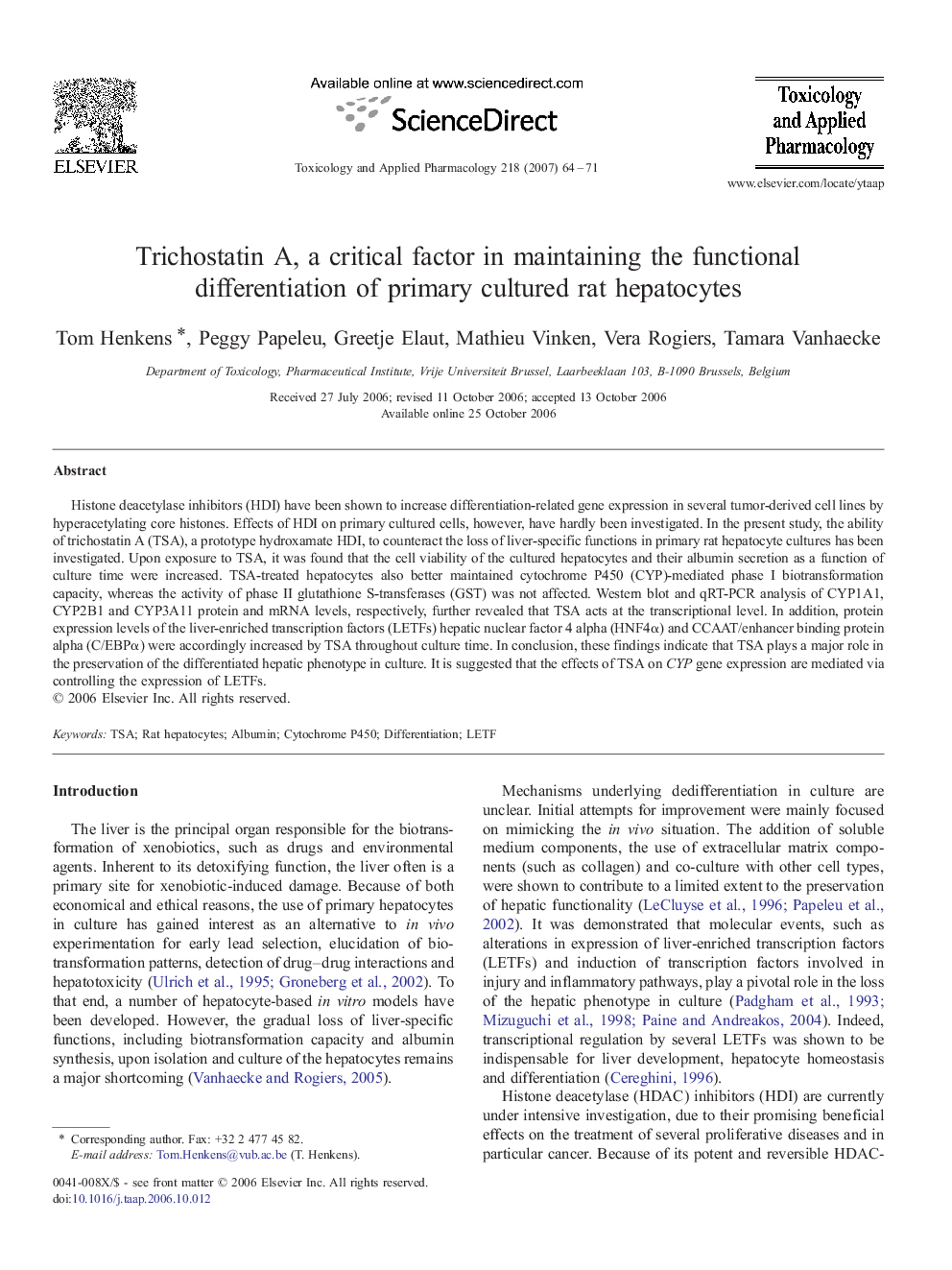| Article ID | Journal | Published Year | Pages | File Type |
|---|---|---|---|---|
| 2571930 | Toxicology and Applied Pharmacology | 2007 | 8 Pages |
Histone deacetylase inhibitors (HDI) have been shown to increase differentiation-related gene expression in several tumor-derived cell lines by hyperacetylating core histones. Effects of HDI on primary cultured cells, however, have hardly been investigated. In the present study, the ability of trichostatin A (TSA), a prototype hydroxamate HDI, to counteract the loss of liver-specific functions in primary rat hepatocyte cultures has been investigated. Upon exposure to TSA, it was found that the cell viability of the cultured hepatocytes and their albumin secretion as a function of culture time were increased. TSA-treated hepatocytes also better maintained cytochrome P450 (CYP)-mediated phase I biotransformation capacity, whereas the activity of phase II glutathione S-transferases (GST) was not affected. Western blot and qRT-PCR analysis of CYP1A1, CYP2B1 and CYP3A11 protein and mRNA levels, respectively, further revealed that TSA acts at the transcriptional level. In addition, protein expression levels of the liver-enriched transcription factors (LETFs) hepatic nuclear factor 4 alpha (HNF4α) and CCAAT/enhancer binding protein alpha (C/EBPα) were accordingly increased by TSA throughout culture time. In conclusion, these findings indicate that TSA plays a major role in the preservation of the differentiated hepatic phenotype in culture. It is suggested that the effects of TSA on CYP gene expression are mediated via controlling the expression of LETFs.
